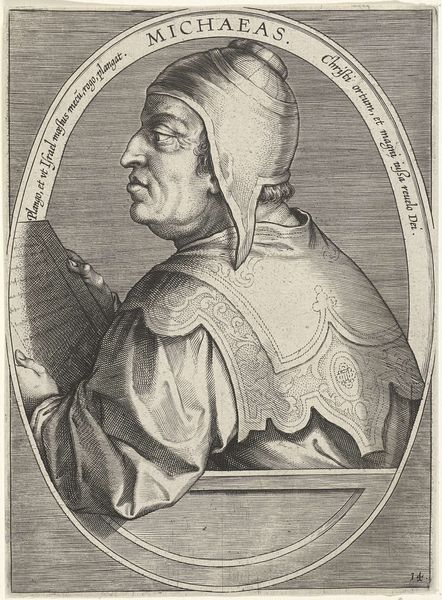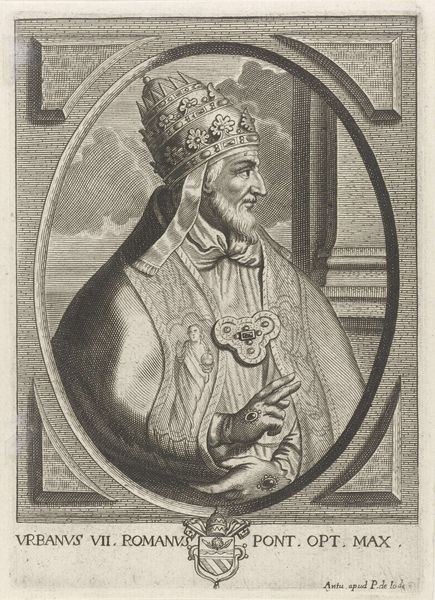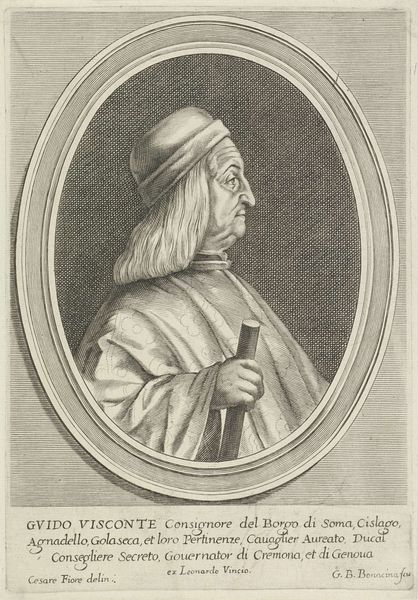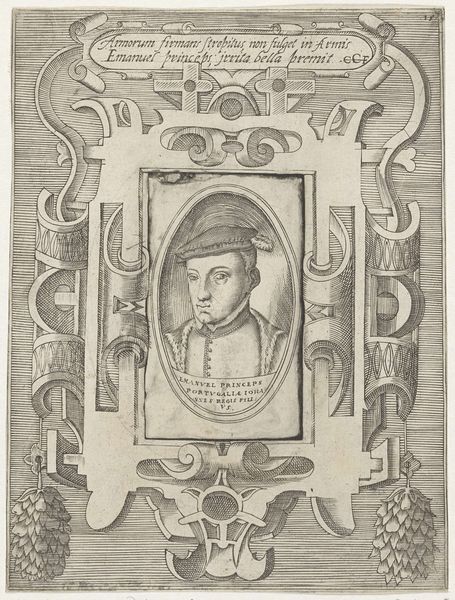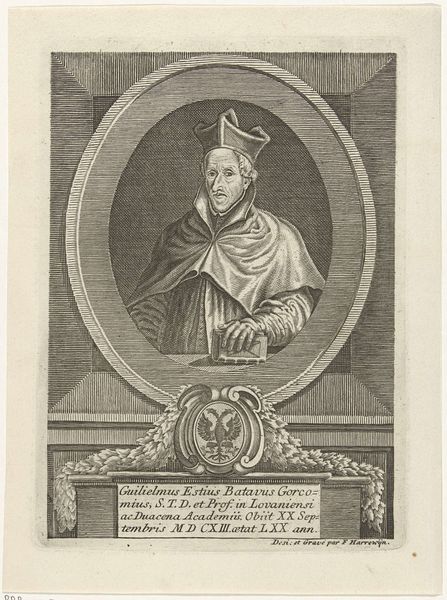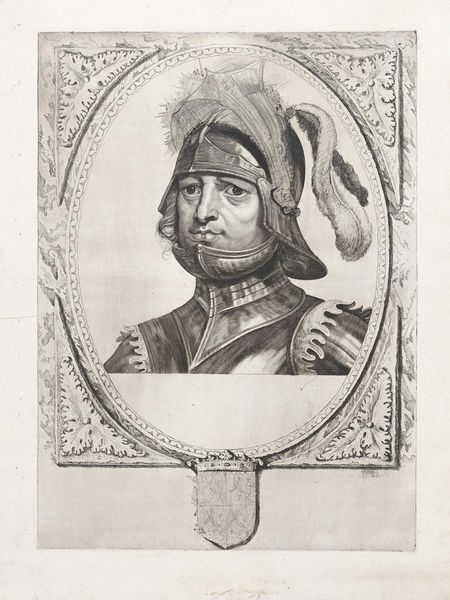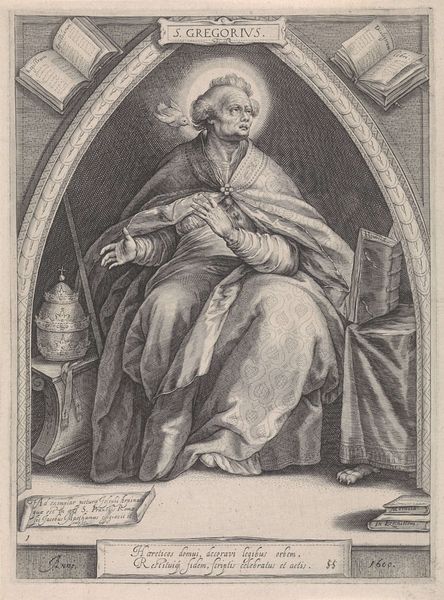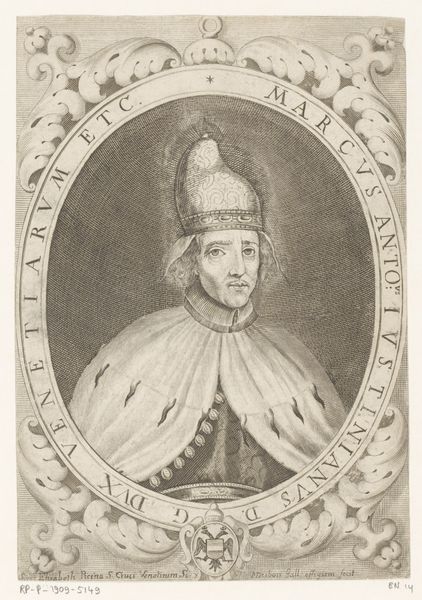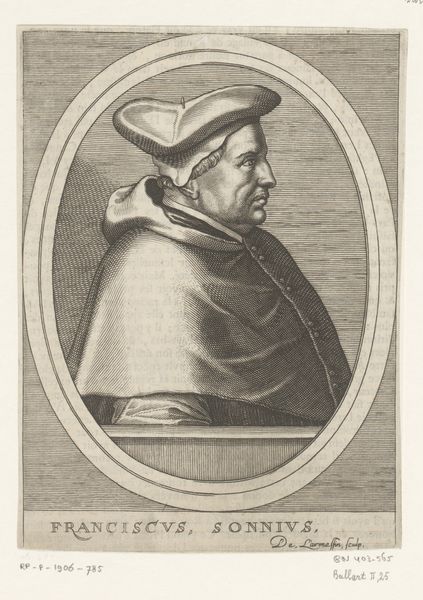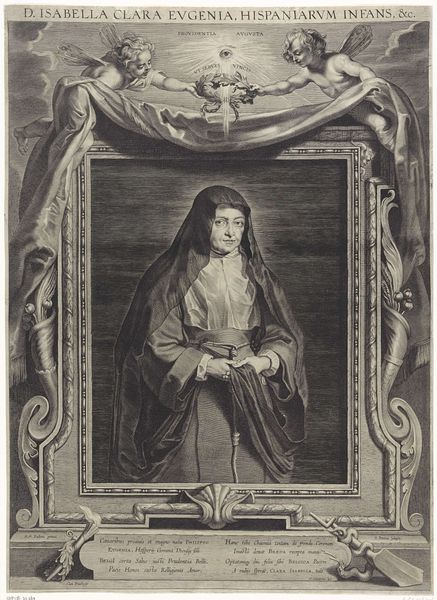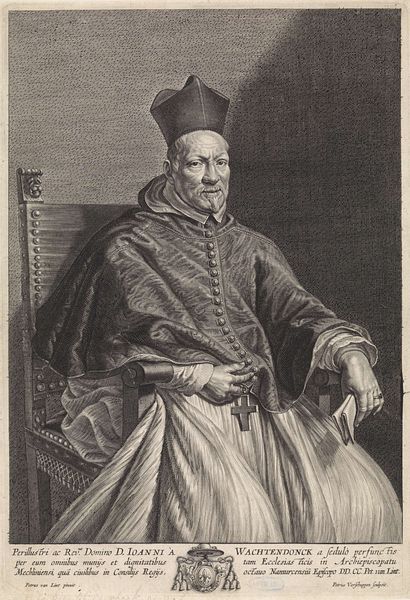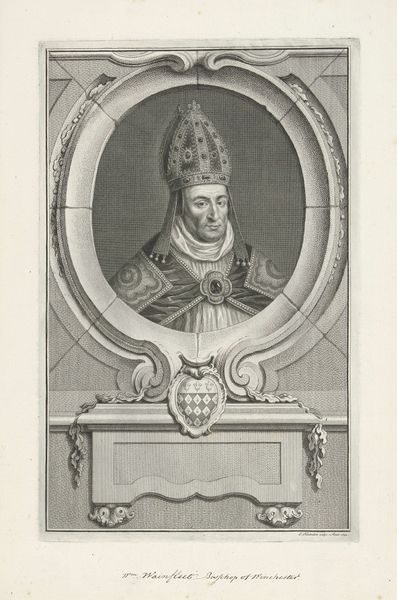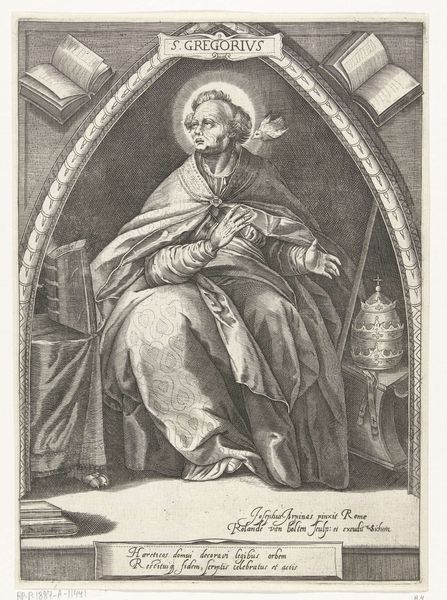
drawing, charcoal
#
portrait
#
drawing
#
baroque
#
charcoal drawing
#
pencil drawing
#
charcoal
#
academic-art
Dimensions: height 234 mm, width 208 mm
Copyright: Rijks Museum: Open Domain
This image of H. Wenceslaus was made by Johann Friedrich Leonard in Prague, sometime in the 17th century. It is an etching, a printmaking technique that relies on the corrosive properties of acid to create an image in metal, which is then inked and transferred to paper. The etching process would have started with a metal plate, likely copper, coated with a waxy, acid-resistant ground. The artist would then use a needle to scratch away the ground, exposing the metal beneath. The plate is then submerged in acid, which bites into the exposed lines, creating grooves. The depth of these grooves determines the amount of ink they will hold, and thus, the darkness of the lines in the final print. Consider how the linear quality of the etching influences the image, with the dense network of lines creating the tonal variations that give the figure form and depth. Etchings like this one were relatively quick to produce, and could be made in multiples, making art more widely accessible. It is a great example of how a process can be both technical and expressive, influencing both the appearance and the social role of an image.
Comments
No comments
Be the first to comment and join the conversation on the ultimate creative platform.
